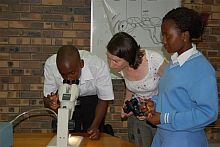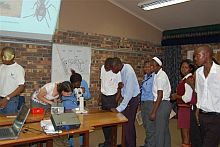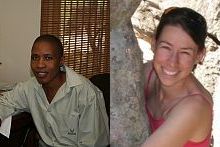Introducing learners to burning for biodiversity in Africa
|
- Joe Sibiya, Education Outreach Officer, SAEON Ndlovu Node
The education outreach programme of the SAEON Ndlovu Node coordinated a seminar for local grade 11 biology learners under the theme ‘Burning for Biodiversity’.
The aim of the seminar - which was held at the Phalaborwa Campus of the Mopani Further Education and Training (FET) College - was to increase awareness among learners about the role of fire and invertebrates in the conservation of savanna systems.
The programme was facilitated by Hendrik Sithole of South African National Parks and Dr Kate Parr, current Trapnell Fellow in African Ecology at Oxford University Centre for the Environment in the United Kingdom.
Six educators and 36 learners from schools in Phalaborwa attended the seminar. The presentations focused on environmental aspects related to conservation practices.
The role of ants in the ecosystem
Parr and Sithole presented an interesting talk on ants including their habitat and niche, reproduction behaviour, social structure, feeding behaviour, body parts as well as species and subspecies of ants. They elaborated on the role of ants in the ecosystem and how fire can influence their distribution and behaviour as well as their position on the food chain.
It was good to see the lively interaction between the learners and the presenters. The learners were interested to learn more about the humans-ants relationship as ants are part of our daily lives. In the discussion session learners were made aware of the threats that fire poses to biodiversity.
The talk was further enriched by a practical component during which learners and educators were invited to use a microscope to observe the composition of the various species of insects discussed during the talk.













